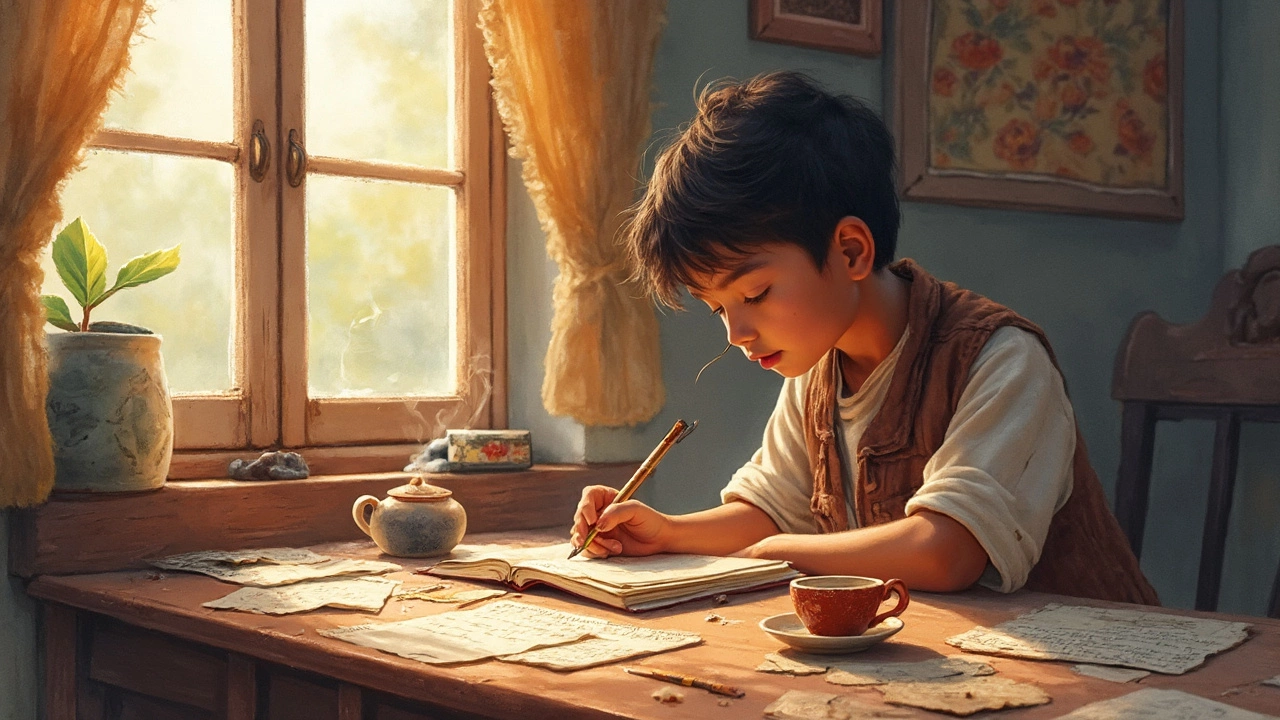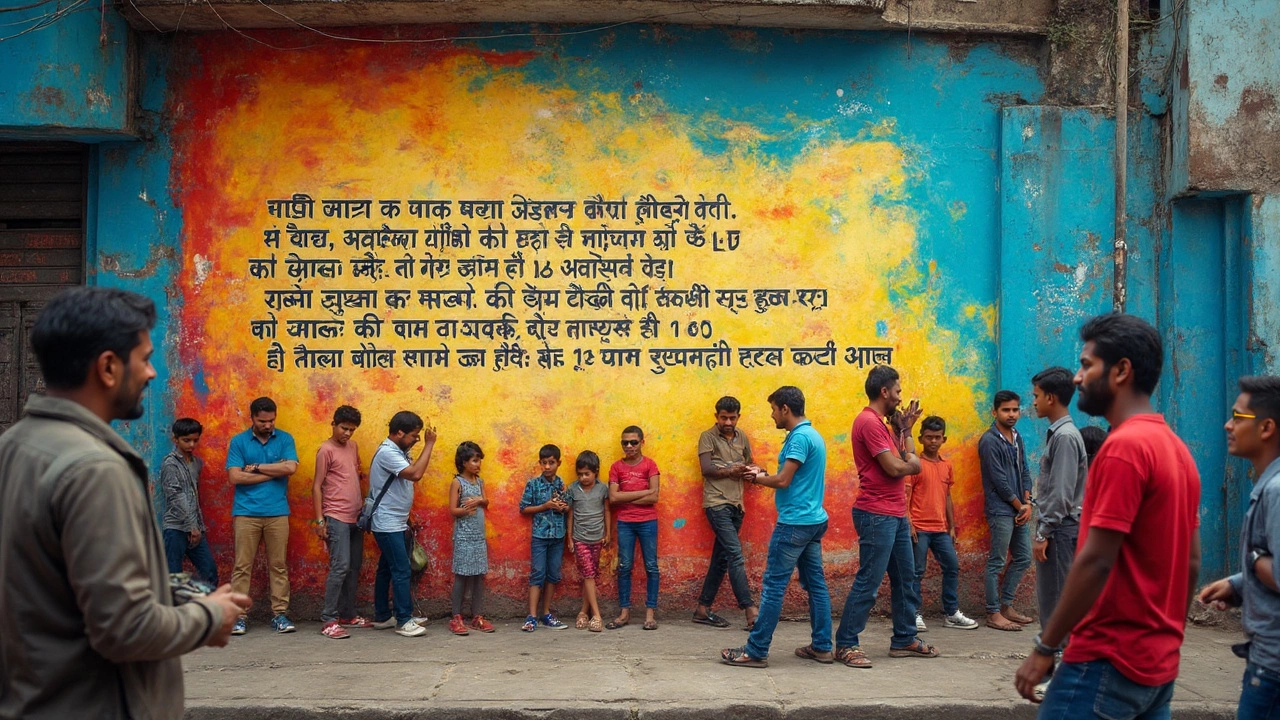One Line Poem: Exploring Minimalist Poetry and Its Power

Here’s a wild thought: What if a poem fit in a single breath, a single line, and yet still packed a punch? Not exactly the stuff of dusty anthologies, but it’s real—and shockingly powerful. Most folks think poems need to ramble on, verse after verse. But what happens when you cut everything down to just one line? You get something that’s short, sharp, and makes you stop and think. So, is there a one line poem? Not only does it exist, but it’s an art form shaping the way people look at poetry around the world.
The Power and Purpose of the One Line Poem
One line poems—also called monostichs—aren’t some recent TikTok-driven fad. The idea’s been around for ages, riding under the radar while everyone else was counting syllables and stanzas. Take this: the philosopher Aristotle reportedly said, "Poetry is finer and more philosophical than history." If you’ve ever felt something deep after reading just a few words, you get what he means. Shrinking a poem down to a single line isn’t about being lazy. It’s a focused burst, like espresso versus drip coffee. Every word works overtime, squeezing in meaning, image, or feeling, with no fat to trim.
Here’s a quick check-in: A monostich isn’t a haiku, which has its own strict rules. It’s not an aphorism, which is usually trying to make a point for your fridge. The one line poem is about poetry’s ability to be distilled and still feel poetic—maybe a punchline, a gut-punch, or a moment of awe. Maybe you read it and have to pause, just like hearing a phrase that feels both new and timeless at the same time.
Why would anyone write one line poems? Besides the flexibility and freedom, people turn to this form to cut straight to emotion—no rambling or padding. Short, direct poems can stick in your memory when a whole novel might not. They’re tweet-sized, but they can be breathtaking, mysterious, or funny. Here’s one by Russian poet Yevgeny Yevtushenko: "To fall asleep, one needs peace." Simple line, right? But you can dwell in that idea all day. That’s the magic.
If you want some numbers, Google Books shows thousands of published poems that are a single line long. Some journals like "The Journal of Compressed Creative Arts" even have a dedicated space for them. And with the rise of social media, poetry has never been shorter—or more widely shared. Readers crave quick parcels of honesty and impact. Not everyone has time for an epic these days.
Ready for a few classic examples? Poet Ezra Pound once wrote simply: "The apparition of these faces in the crowd; Petals on a wet, black bough." That line stuck around, showing up in lit classes everywhere. It’s not a strict one liner, but it points at the trend—pared back, sharp, visual. American poet Carl Sandburg gave us: “The fog comes on little cat feet.” Seven words. Total vibe.
If you’re curious about how these poems measure up against longer forms, check out this quick table:
| Form | Average Word Count | Purpose | Difficulty |
|---|---|---|---|
| One Line Poem (Monostich) | 7–15 | Quick punch, distilled feeling or image. | High (every word must count). |
| Haiku | ~17 syllables | Narrative snippet, nature, seasonal themes. | Medium (has rules, but more room). |
| Sonnet | 100–120 | Story, contemplation, argument. | High (formal structure). |
| Free Verse | Varies | Anything goes. | Medium/Low (no rules, more freedom). |
Monostich might look easy. But it’s tough because you’ve got no room for error. Word choice matters more than ever. Imagine trying to describe an entire sunset with one sentence. If you nail it, readers remember it forever.

Famous Examples and Their Secret Sauce
Of course, nobody writes a killer one line poem on their first try. But there are folks who’ve mastered it—often with sneaky skill. Sometimes it’s the big names (think Emily Dickinson or Sylvia Plath) and sometimes people who never really did anything else. Take Aram Saroyan, a poet who wrote a one word poem: "lighght." Looks like a typo, but it got printed in big journals and started an argument about what is and isn’t poetry. That debate is still raging today.
Let’s look at some classics that have been published, studied, and taught:
- "I am nobody: who are you? – Emily Dickinson." This one line, often presented within a longer poem, is sometimes cited as a standalone. It packs an entire worldview, sense of loneliness, and a wink at the reader. Imagine how it hits if you stop after just those words.
- Claude McKay’s "The Harlem Dancer" includes this little bomb: “Her voice was like the sound of blended flutes.” Not every poem was written as a single line, but lines lifted from longer works can take on a life of their own. One line, years of meaning.
- Robert Creeley specialized in short poems, sometimes just a breath long. “The rain falls on the city;” leaves you picturing, feeling, and realizing the weight—or gentleness—of a moment.
Does length matter for impact? Turns out, economists have looked at Twitter data and found that short texts—under 80 characters—get shared and remembered far more than long ones. Poems follow the same rule: the shorter, the stickier. Take the most famous short poem of all time. American poet Strickland Gillilan wrote "Fleas": "Adam had ‘em." Just three words. British poet George Barker once dropped, "It is the business of the future to be dangerous." Both get quoted endlessly, hitting that sweet spot between thought and feeling.
Here’s a quote that shows just how much a one liner can carry. In his book "The Triggering Town," poet Richard Hugo said:
“A good poem is a statement that survives its performance.”That stays with you, doesn’t it? Because short poems don’t explode all at once. They heat up slowly, hanging around in your brain until they flare into meaning.
Want another tip? When you’re crafting your own, start with the feeling first, not the form. Don’t try to be clever right away. Think about a single moment, a flash of an image or emotion, then see how bare you can make it without losing the spark.
Think about this one: "Loneliness is a crowded room." That stings and sings at the same time, doesn’t it? No wasted words—not even an and or the. If you’re thinking of famous modern poets, Twitter accounts like @tinycarebot and Rupi Kaur’s IG feed are full of these snappy, relatable lines. Some folks balk at calling them poetry, but who cares what the label is if it moves you?
There’s even a website called "One Sentence Poems" that only accepts poetry short enough to fit in a tweet. Some of the submissions have gone viral, showing up on mugs, tattoos, and inspirational posters. This is proof that the form is sticking around—and reaching even poets who didn’t think they had time to write. The audience is growing, not shrinking.
If you’re the stats-and-studies sort, there was a study by the American Psychological Association (2019) that ranked memory retention. Short, vivid statements were remembered by participants up to 30% better than longer pieces. It explains why song lyrics, punchlines, and, yes, monostich, get stuck in your head.

How to Write and Appreciate One Line Poems
Ready to try writing your own? Surprisingly, it’s not about being clever or mysterious (though that doesn’t hurt). Here’s what helps:
- Start with an image, feeling, or memory that won’t leave you alone.
- Say it out loud, over and over, until you’ve cut every word you don’t need.
- Check if the line works on its own—if it makes you feel or picture something right away.
- Let the line rest. Then look again to see if it still feels sharp. Edit if you need to.
- Ask a friend to read it. If they go "huh," you may need a tweak.
Feeling stuck? Here are three types of one line poems that get people going:
- Image focused: Paint a quick picture, like "Sunlight cracks the sidewalk’s grin."
- Emotion packed: Share a mood, e.g., "Grief is an ocean without any shore."
- Philosophical: Drop a truth bomb, such as "Dreams are only memories wearing new shoes."
Once you’ve got your line, share it somewhere—online, with friends, scrawled on sticky notes. The fun thing about these poems is they fit everywhere. There are even "poem in your pocket" days where teachers hand out tiny poems; single liners are perfect for this.
If you’re reading these and feeling weird about whether a single sentence can really be one line poem, you’re not alone. There are still arguments in poetry circles about how short is too short. But poems aren’t about word counts—they’re about what gets through to you. A single good line can outlive a whole book. Poet Robert Hass once joked: "Poetry is what is lost in translation...and what is left in." For monostich, what’s left in is everything.
See if you can spot the difference next time you’re reading or scrolling. The short poems that pop up and rattle around in your head? That’s the form working its magic. Try writing a few—and see if you can’t whip up a sunset, or a heartbreak, or a hope, all in one line.